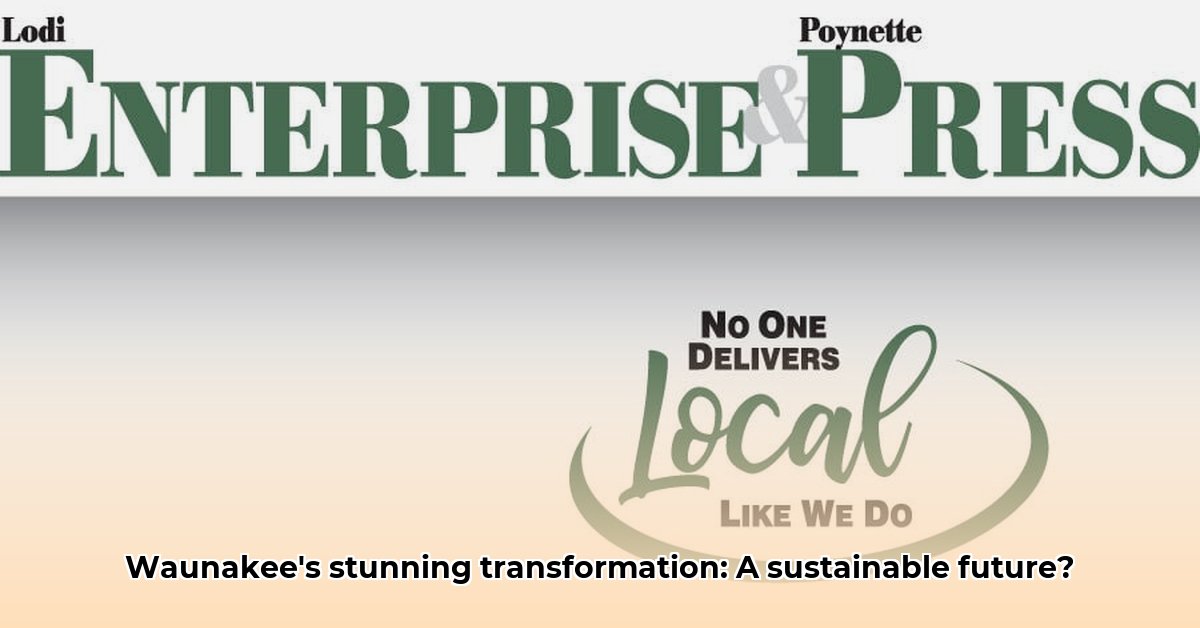
Murphy's Mill Acquisition: A Case Study in Sustainable Development
Waunakee Village, Wisconsin, faces a critical decision: the acquisition of Murphy's Mill. This presents a unique opportunity for sustainable redevelopment, potentially transforming a neglected area into valuable community assets like green spaces or community gardens. However, significant environmental and financial risks necessitate a careful, transparent, and community-engaged approach. This case study analyzes the proposed acquisition, drawing parallels with similar community revitalization projects, particularly those around Lodi Enterprise, WI, to offer actionable steps for Waunakee's success.
Murphy's Mill: A Historical Context
Murphy's Mill holds a rich history within Waunakee. However, its current state requires substantial remediation. Understanding its past industrial uses is crucial for a comprehensive environmental assessment, as past activities could have left behind soil or groundwater contamination. This historical context informs the need for a careful approach to redevelopment.
The Proposed Acquisition: Vision and Challenges
Waunakee Village's plan to acquire Murphy's Mill reflects a broader vision for sustainable community development. The potential transformation into valuable community assets like green spaces or community gardens is appealing. However, the project's financial viability and environmental soundness pose significant challenges. The success of this initiative hinges on transparent planning, meticulous risk mitigation, and active community participation.
Environmental Assessment: A Crucial First Step
A thorough environmental assessment is paramount. This isn't merely a regulatory requirement; it's a fundamental step towards responsible land stewardship and sustainable redevelopment. Soil contamination, water quality, and potential presence of hazardous materials must be fully investigated. Ignoring potential environmental hazards could lead to escalating costs and potentially endanger public health.
"A comprehensive environmental assessment is non-negotiable," said Dr. Evelyn Reed, Environmental Scientist at the Wisconsin Department of Natural Resources. "Failing to address potential contamination can lead to delays, escalating costs, and jeopardize the entire project."
Community Engagement: Fostering Transparency and Collaboration
Effective community engagement is critical to the project's legitimacy and long-term success. Open communication, transparent information sharing, and interactive forums are essential to address community concerns. A top-down approach risks alienation and may ultimately derail the project. Regular town halls, online forums, and surveys can facilitate vital dialogue and build community buy-in.
Financial Analysis: Balancing Costs and Benefits
The financial implications of acquiring and redeveloping Murphy's Mill demand rigorous scrutiny. A detailed budget should include:
- Purchase price
- Environmental remediation costs
- Infrastructure improvements
- Redevelopment expenses
- Ongoing maintenance
A thorough cost-benefit analysis is crucial to determine the project's long-term financial viability. This analysis must clearly demonstrate that the anticipated benefits outweigh the financial risks.
Sustainable Redevelopment Options: A Vision for the Future
A range of sustainable redevelopment options exists, offering Waunakee the opportunity to create a vibrant and environmentally responsible community asset. These could include:
- Green spaces and parks
- Community gardens
- Eco-friendly businesses
- Educational facilities focused on environmental sustainability
The chosen option should align with community preferences, promote environmental sustainability, and contribute to the overall economic vitality of Waunakee. The experience of Lodi Enterprise WI in similar projects should be studied closely for best practices and potential pitfalls.
Actionable Steps for Success: A Roadmap for Waunakee
- Conduct a Comprehensive Environmental Assessment: This should include Phase I and, if necessary, Phase II assessments to identify and remediate any environmental hazards. (See EPA Brownfields Program for guidance).
- Foster Active Community Engagement: Hold regular public meetings, utilize online platforms for feedback, and actively solicit community input at every stage of the project.
- Develop a Detailed Financial Plan: Create a robust budget that accounts for all potential costs and explores diverse funding mechanisms including grants and public-private partnerships.
- Prioritize Sustainable Design: Choose redevelopment options that emphasize environmental sustainability, using eco-friendly materials and prioritizing energy efficiency.
- Implement a Robust Monitoring Program: Track environmental impacts and economic performance throughout the project's lifespan to ensure its long-term success and sustainability.
Key Lessons from Lodi Enterprise WI and Similar Initiatives
Waunakee can learn valuable lessons from studying the successes and challenges of similar community revitalization projects—particularly those around Lodi Enterprise WI. Analyzing these case studies can offer insights into best practices, effective community engagement strategies, and potential pitfalls to avoid. Identifying common challenges and successful mitigation strategies is crucial for informed decision-making.
Conclusion: A Sustainable Future for Waunakee
The Murphy's Mill acquisition presents a significant opportunity for Waunakee. By prioritizing thorough environmental assessments, robust community engagement, responsible financial planning, and a commitment to sustainable design, Waunakee can transform this neglected area into a vibrant community asset that benefits its residents for generations to come. Though challenges exist, a proactive and transparent approach, coupled with learning from the experiences of similar projects, can ensure a successful outcome. This case study serves as a model for other communities facing similar land acquisition and redevelopment opportunities.